
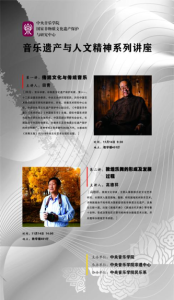
The first four lectures of the "music heritage and humanistic spirit lecture series", sponsored by the national intangible cultural heritage protection and research center of the central conservatory of music and co-organized by the department of folk music, were successfully concluded on November 25. First lecture including music, Mr Tian qing's traditional culture and traditional music, dunhuang cultural scholar Mr Gao Dexiang dunhuang grottoes dancing to the formation and development process, from Taiwan's cultural scholar Mr Guide to the wisdom and the division of genetic diversity, the heritage protection of philosophical anthropology "and Mr Muralist Wang Zheng ancient qiuci mural dancing to the image.
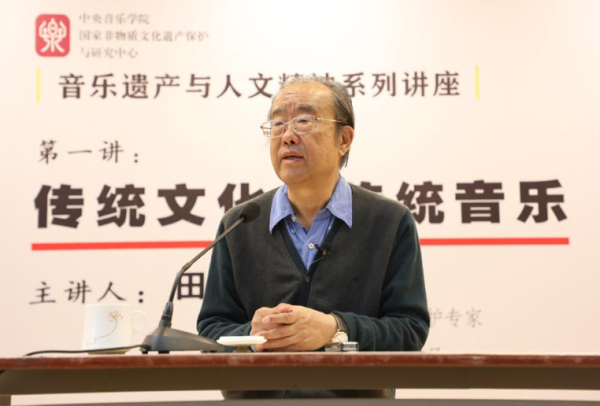
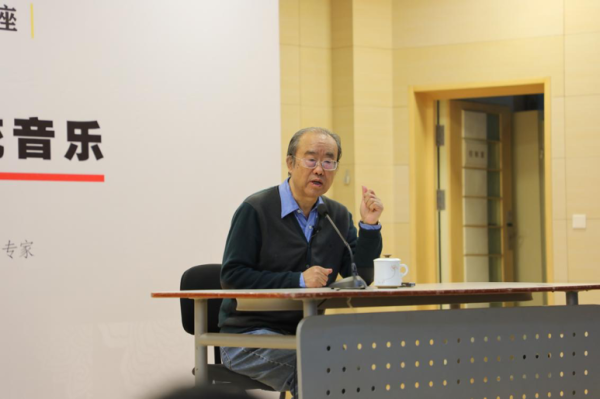

Through the three topics of "the relationship between technology and culture", "the protection of intangible cultural heritage" and "the status quo of China's traditional music", Mr. Tian qing tells the story that conservatory students should pay special attention to the study of culture and should not only focus on technical issues. Secondly, it puts forward the thinking of "essence" and "dregs" in the traditional culture, pointing out that a nation has no root, that is, it has not found the source of culture; At the same time, he also discusses the understanding of the "cultural confidence" advocated by the whole people today. He compares this culture to "three pillars and two floors". The three pillars refer to Confucianism, Buddhism and Taoism. The first floor refers to all the outstanding traditional culture of our country, while the second floor refers to the "intangible cultural heritage" rooted in the masses of the people. For thousands of years, it has maintained the spirit of the Chinese nation and inherited the most valuable heritage of the Chinese nation. Therefore, every effort must be made to protect it. Mr. Tian qing believes that the value of Chinese traditional music is not only reflected in the form of music, but also in the "charm" contained in it. We strongly appeal to the importance and learning of traditional Chinese folk music, and expect young students to respect their own traditional music and learn more traditional music. The minimum requirement for a Chinese is to master and understand his own traditional culture and take pride in it.
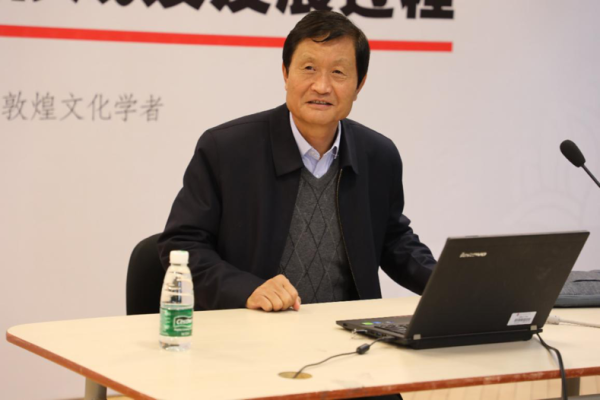
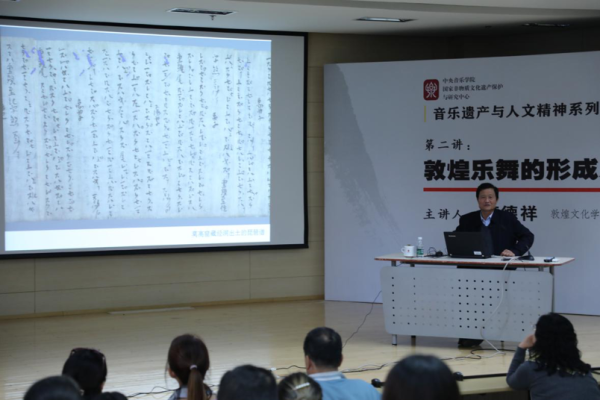
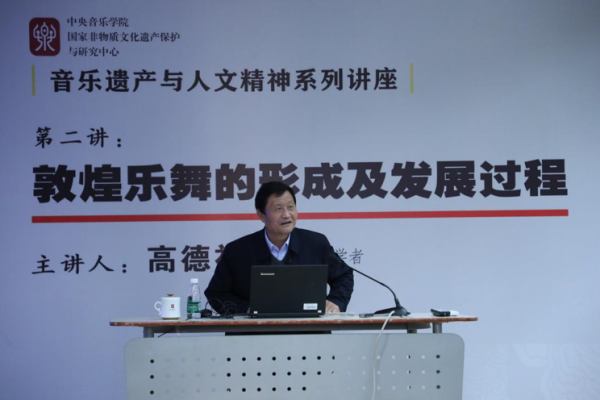
Mr Gao Dexiang graphics through the rich historical data and image, from the formation of the dunhuang grottoes s, sensors and actuators, construction scale, the cultural value of dunhuang grottoes has carried on the comprehensive explanation, through the analysis for a large number of murals in the grottoes of coloured drawing or pattern, the style of ancient dancing for form remains, gauging, Musical Instruments, music and playing method, etc., to give a thorough explanation. Finally, Mr. Gao dexiang once again expressed his deep regret and regret for the loss and damage of dunhuang grottoes due to various reasons, and again called for further rescue and protection of dunhuang cultural relics and intangible cultural heritage.
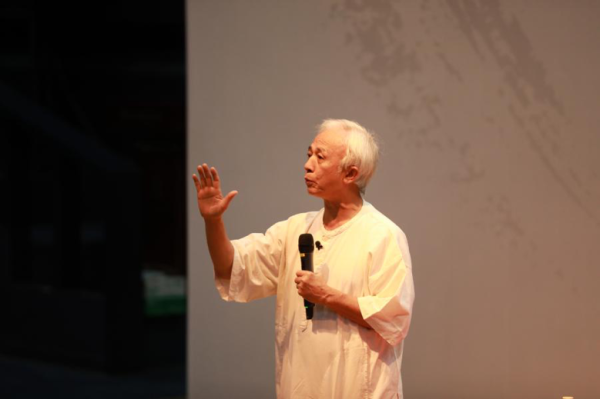
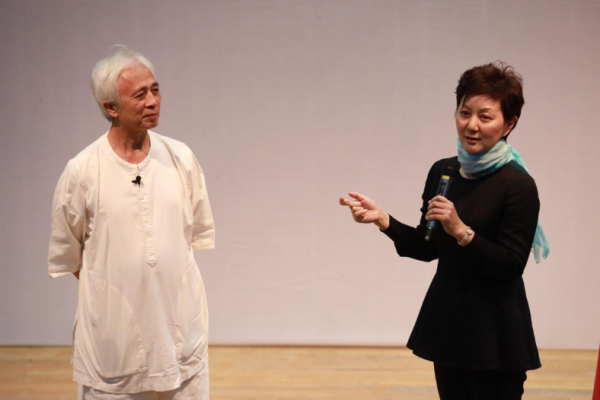
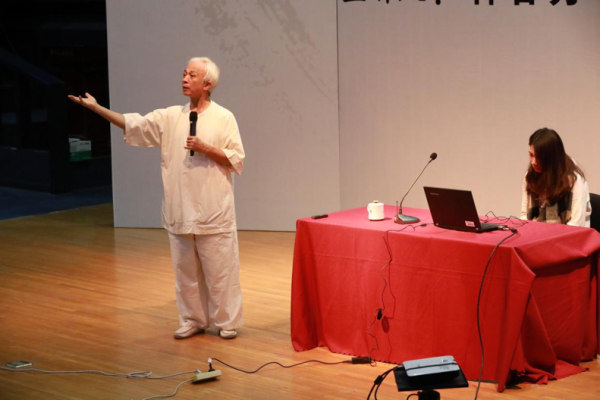
Mr Guide through the definition of culture, and culture of the group, model, the stability and harmony, the concept of cultural theory and biology and the nature of the diversity of gene pool and the concept of "dating wisdom" interpretation of many aspects, from a macro perspective of anthropology, relates to the present "intangible" and "music intangible" work the necessity, says Mr Guide to contemporary culture theory by means of biological theory, and cultural gene that is one of the most important aspect, as biodiversity on a sound ecological environment has its key role, culture is the ethnic group to adapt the environment behavior model is developed, Maintaining cultural diversity is the need of the development of human civilization; However, the development of science and technology, especially the emergence of information society, has promoted the rapid homogenization of global culture. Therefore, it has become the trend of today's world to maintain the richness and diversity of human cultural gene pool. Traditional culture is the crystallization of ancient ancestors' adaptation to the environment in a specific time and space. Respecting and preserving traditions is not only a good feeling for antiquity or tracing back to the source, but also a concern for maintaining the diversity of the national cultural gene pool, so as to make future development more possible. Mr. Lin gufang emphasized the "wisdom of the ages", which refers to a necessary observation in the cultural aspect of modern and ancient times, and is a kind of understanding of life "with the body but without the body". Therefore, whether expressing feelings or wisdom, the ancients did not need to be inferior to the present people, and the present people are not completely superior to the ancients; Therefore, from the perspective of cultural gene preservation, the protection of "intangible cultural heritage" is exactly rich in "generation wisdom".

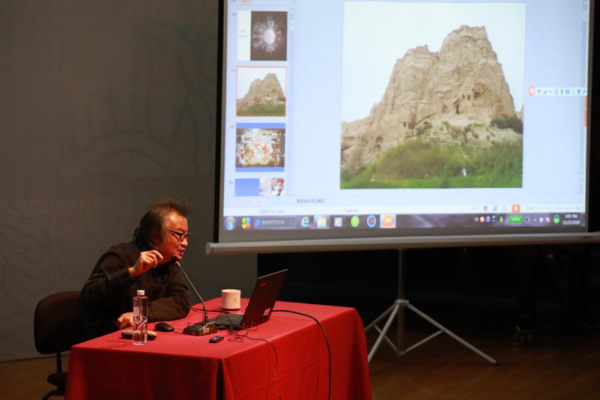

Through hundreds of images of statues and murals from the ancient qiuci grottoes and contemporary restoration; This paper describes the political, historical and geographical origin, development and evolvement of the culture of qiuzi grottoes, which is older than "mogao grottoes in dunhuang", as well as the close connection between the statues and murals and buddhist culture and the artistic characteristics. The lecture also focuses on the main Musical Instruments, the form of the band and the scale of the music and dance in the picture of qiuci fresco. Since the han dynasty, the qiuci the minority region (now the xinjiang kuqa area) and zhongyuan mainland music culture is closely related with each other, to the southern and northern dynasties, sui, tang, song from the preaching of the music are increasingly rich, the tang dynasty palace has "qiuci ci-poetry" and "qiuci music ministry", the ancient literature "potpourri since zhou, sui, the orchestra will be hundreds of song, multi-purpose cool music, encouraging multi-purpose qiuci music." It shows the important position and extensive influence of qiuci music and dance in ancient Chinese traditional folk music. At the same time, it also further proves the important cultural relics and archaeological value of the statues and murals in qiuci grottoes, especially in the study of ancient traditional folk music.
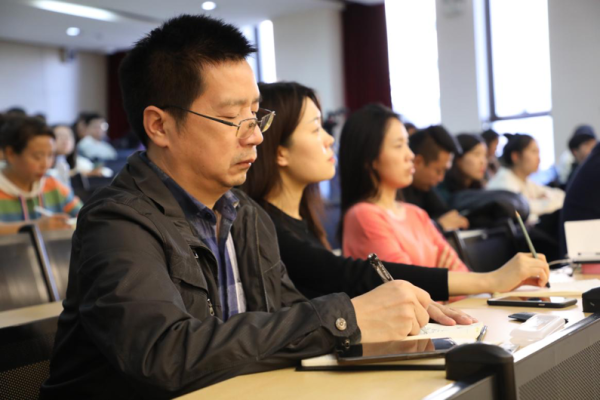
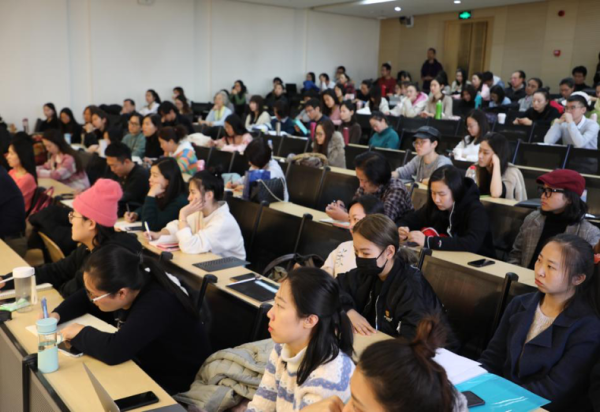
During the course of the lecture, teachers and students of the college and music colleagues from outside the college eagerly attended the lecture. Every time the lecture ended, the audience would also put forward some questions and perplexities about the study, comprehension, inheritance and development of traditional folk music to the experts, and all the experts answered them with enthusiasm. The audience all paid tribute to the efforts and achievements made by the lecturers in the research and practice of Chinese traditional music, and also expressed that they had deepened their understanding and confidence in Chinese music culture through listening to the lectures.
Folk music as the university dean and director of the center for intangible ZhangHongYan teacher says: "' intangible lecture series' first round invitation to the music and humanistic spirit on the four senior experts, has opened a good start, the next lecture will be held in succession, the college teachers and students and the general concern to the development of national music in strengthening public of understanding and connection with traditional culture, traditional music, related teaching and learning play a positive role in auxiliary and promote."